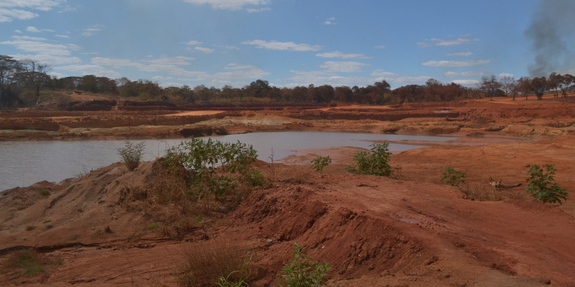The 2015 AIPC-ZAM Investigations
How villagers fight a mining pact from hell in the world’s richest ruby deposit
Western multinationals are often blamed for a lack of ‘Corporate Social Responsibility.’ But an investigation into ruby mining in Mozambique shows that it is hard to blame just one side when the rulers in the ‘partner’ country abuse their own citizens. In Montepuez, the richest ruby deposit in the world, a local General pockets his proceeds of an UK-Mozambique ruby mining partnership while artisanal miners get shot by local Special Forces . And whilst the multinational’s headquarters respond to questions and concerns, the Mozambican government simply stonewalls.
Only foreign criminals, Tanzanians and Somalians, cared for Geronimo Potia’s 18-year-old son Antoninho when he was shot by the government security forces who patrolled his village guarding the rich ruby resources that legally belong to Montepuez Ruby Mining (MRM), a joint venture between UK-based Gemfields and Mozambican Mwiriti Limitada, which has strong connections to the Mozambican government.
In the eyes of the company, the government and the men who shot him, Antoninho was a thief. MRM held the license for ruby mining and therefore the fact that the young man was digging rubies in the region where his family has lived for generations, did not matter. Antoninho had been declared as much a criminal as the foreign smugglers, who had come to buy the stones from him.
Fellow miners said Manuel had crawled for about a hundred meters before he died
Left to die on Namanhumbir’s red soil on 19 April 2015, his body was carried home to his father by his Tanzanian and Somalian buyer friends. The same smugglers also went around collecting money for the burial and to support the family. “If it wasn’t for them, my son’s body would have been left there, we wouldn’t have had money for the burial,” says Geronimo Potia, sitting despondently in his sticks-and-mud home in Muaja, a village close to the Namanhumbir mining area.
On the same 19th of April 2015 that Antoninho died, fellow miners came to tell Artur Pacore that the same security forces, the FIR (Força de Intervenção Rapida, Rapid Intervention Force, is their full name: a Special Forces section of the army) had shot his son, Manuel, in the abdomen. “They said he dragged himself out of the ruby deposit and crawled for about a hundred meters. Then he died.”
Far away in London, MRM headquarters express concern about the killings. In a lengthy response a spokesperson states that the company would have been made aware of such cases if they had been killed inside the MRM licence area after 2012 (1). It promises to investigate thoroughly.
Associated benefits
In the introduction to the response, the company says that it is simply not a good idea for individuals to dig for rubies in Montepuez: “Artisanal miners risk their lives to dig for gemstones at the behest of unscrupulous (and mostly foreign) middlemen who operate a system of smuggling, pay little or no tax to the Mozambican government, and profiteer at the expense of local people,” MRM says, adding that “this mining is unregulated, unsafe, exploitative and opaque.” Fortunately, the company concludes, “such activities tend to dissipate over time, and as the benefits of formalised methods of extraction and their associated benefits begin to take shape.”
But such benefits have not yet come to Namanhumbir.
Everything in Namanhumbir is red. The soil, much of the dry vegetation, the sticks and reeds of which with the people construct their huts; the wood, the rubies, the dust. Antoninho Geronimo’s murder was never reported to the police, but our sources in the justice department, tell us eighteen people have been assaulted, wounded or mortally shot and left to die for digging the riches of their lands.
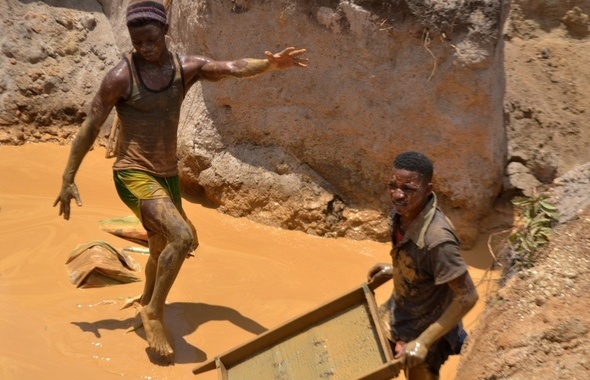
The police came soon after the government discovered the wealth
The cases are counted from 2009, when the rich ruby deposits were first discovered in Montepuez province. The first killings are therefore not the concern of MRM, which was only given its license in February 2012, but of the Mozambican government, which launched the first police operation against illegal miners in July 2009, shortly after it had become aware of the wealth in the area. But Antoninho and Manuel died in 2015, three years after the ‘benefits of formalised extraction’ were intended to begin to take shape.
The soil and the rubies
The Potias and the Pacores are just two of the fifteen hundred families – altogether roughly nine thousand people whose lives have changed dramatically with the advent of formal mining in the area. Besides mining and farming there aren’t any other sources of income here. For many years (it is difficult to say how many, since the mining was informal), local artisanal miners dug up camada, sand with rubies, from their soil; they sifted it and sold the rough stones to visiting foreign traders.
But in 2009 the stones were discovered in Thailand and traced back to Montepuez. Now, various military-style forces stop the locals from accessing the natural resources in their land. Last year, -coincidentally shortly after the killings of Antoninho and Manuel-, the FIR was replaced by the Mozambican state Natural Resource and Environment Conservation Force. Next to these operates the Mozambican Police Protection force, which is also accused of protecting the interests of MRM rather than its own citizens. And then there is MRM’s private security, called Nakatanas, “men of machete” by locals. Officially they are a team of 470 guards from the ARKHE security company. Most carry only canes, but some are armed with firearms, too.
Montepuez district head attorney Pompilio Xavier Wazamguia says that he is aware of four concluded cases of deaths by shootings and beatings in MRM’s mining area. Of these, a check shows that three Mozambican policemen of the FIR were convicted; the fourth, a security guard from ARKHE, was acquitted due to lack of evidence. (The court judgement reads that the victim in this case, illegal miner Carlos Calisto, was shot dead but the gun used could not be conclusively traced to the security guard in question.) Wazamguia says his department is still gathering evidence for eleven other cases linked to allegations of the security forces murdering illegal miners.
Mozambique’s Minister of Interior has declined to comment
Mozambique’s Minister of Interior, in charge of the Government’s Special Forces such as the FIR, has declined to comment. MRM’s main shareholder Gemfields says that the government forces are on their land “to uphold the law of the land and to protect the national interests of the country”; that they aren’t directed by MRM; that no ARKHE employee contracted to MRM was ever convicted and that “neither Montepuez Ruby Mining Limitada nor its officers, staff or contractors are engaged in violence toward or intimidation of the local community.”
Locals in Namanhumbir, however, report that they can’t move freely, under penalty of getting beaten or even robbed. In a report dated July 2015 the local environmental organisation AMA lists complaints of villagers thus: “The Nakatanas and the defence forces stop us from moving around. We cannot use the road that leads to the administrative post (the municipality, ed.) because when they confiscate our money and the goods we are carrying. When we go to cut wood or bamboo, they stop us saying that we are illegal miners. When we are ill we are faced with the problem that we cannot use the road to the clinic.” (2). In a comment, an MRM spokesperson denies that the 'Nakatanas' have anything to do with the company.
Fabergé eggs
Formal mining was supposed to develop Namanhumbir. In 2011, UK Gemfields, a world leader in gemstones that holds the rights to the commercial brand of the famous Fabergé eggs, partnered with a number of powerful individuals in Mozambique’s Frelimo ruling party to form the new local ruby mining company MRM. Samora Machel Junior, son of Mozambique’s first president, is the chairman of MRM’s board. MRM’s chief executive officer Raime Pachinuapa is the son of Raimundo Pachinuapa, a former senior guerrilla commander in Frelimo’s erstwhile liberation struggle from Portuguese colonial rule.
MRM’s Raime Pachinuapa is the son of former FRELIMO commander Raimundo Pachinuapa
In February 2012, MRM acquired a 25-year exclusive mining and exploration license over the area. Since then, its operations have yielded MRM’s seventy-five percent shareholder Gemfields more than US$ 122 million in revenue in auctions alone; an average of US$ 40 million per year. That would be over US$ 10 million per year for the Mozambican partner.
Both partners in the mining operation had promised the villagers of Namanhumbir that mining would be good for them. MRM representatives held a meeting in the area where they explained to the people of the villages in the Namanhumbir area -M'pene, Nseue, Ntoro and Nanune- that Gemfields would run a Corporate Social Responsibility (CSR) programme, which was to include a health centre, sports facilities, a school, a village market and two water wells. There were to be formal jobs as well. Most importantly to the local individual miners, the Mozambican side of the partnership promised that they would get concessions to continue their own mining activities. They were to form associations which would sell their stones to MRM, thereby deriving good income.
But it didn’t exactly happen that way.
The smugglers and the women
The problem, firstly, was that nobody seemed to know what to do about the foreign traders and smugglers. For years they had bought the rubies mined by the villagers. But that trade had been informal and was, now that someone held the license, criminalised. The number of smugglers even grew as the news of the vast ruby wealth got out into the world. They are thousands now, the foreign buyers from Somalia, Tanzania, Congo, Thailand, Zimbabwe, Uganda and West Africa. In their wake has followed a service industry of sex workers.
“Women from Senegal, Malawi, Tanzania,” details district administrator Arcanjo Cassia, who is worried about the health implications of the situation. It also affects local women, he says. Girls have dropped out of school to make a quick buck in sex work. “A young girl will rather go with a man who promises her a mobile phone than go to school. There is now a rise of HIV and Aids in the area. But we have given lectures on disease prevention.” Cassia feels it is all he can do.
“We get nothing. Nothing!”
The health centre that was promised by the company has so far not materialised. Neither have the water wells, the market, the sports facilities or the school. When asked about this, Cassia shakes his head and laments “We get nothing. Nothing!” In its annual report, MRM’s UK majority shareholder Gemfields says that it did build a market and a school, but according to Cassia, all the company did was to give an old building that was there from the Portuguese colonial era “a new coat of paint.” In response to questions, MRM insists that it really ‘rehabilitated’ the school.
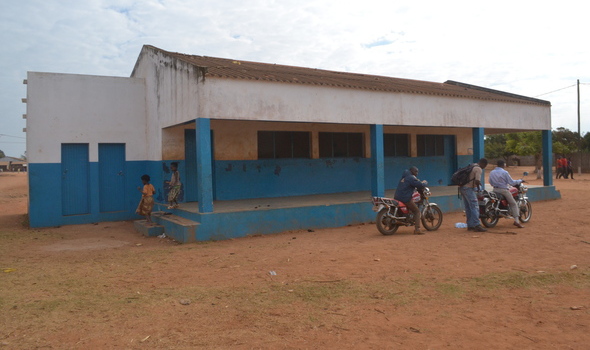
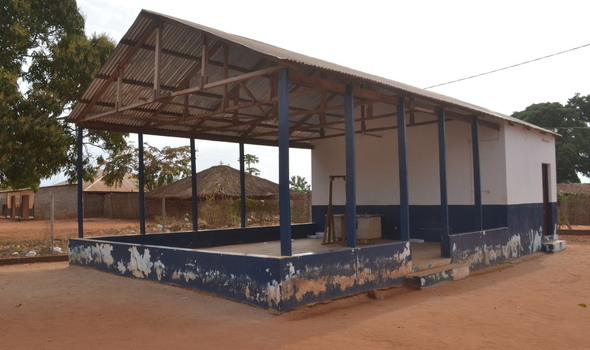
MRM adds further that all the projects are still part of the programme, but that “most companies in this stage of resource assessment phase would prefer to await the completion of their full-scale mining plans before initiating any such programmes.” It maintains nevertheless that corporate social responsibility is its “key priority” and that it programme will “grow commensurately with its operations (3).”
The burning of houses
Officially, MRM is still fighting only foreign criminals. “We work with the Mozambican government to address the illegal ingress across Mozambique’s borders of foreign citizens seeking to profit from the Montepuez deposit,” stated UK Gemfields CEO Ian Harebottle in December 2014. Namanhumbir administrator, Anastasia Clemente, had said the same thing in an interview published on a Mozambican news website in 2012: “Foreigners are exploring and sowing confusion among us, these foreigners are behind all this unrest in the region.”
“Foreign criminals are behind all this unrest in the region”
Locals, however, feel that they, too, have been criminalised. The promised artisanal mining licenses for villagers never materialised. In the same 2012 interview, Anastasia Clemente had blamed the miners themselves for this unfortunate development since ‘they never formed associations.’ But MRM, in its response to us, said that that promise was never made by the company because “prevailing Mozambican law prohibits the trading of rubies by any party other than Mozambican citizens,” which means that MRM, which is a majority foreign company, could not buy the stones anyway (4).
“Every time they discover a new zone with rubies, they chase us out of it”
Locals also accuse the company of forced removals. Several villagers narrate the burning of houses and fields and the beating of locals in Namucho on 15 September 2014. A local man in Namucho says he lost about two hectares of land. “They start digging, they discover ruby, then the company comes and says the area belongs to them.” Another villager, in Ntoro: “The company burns our houses and takes our fields. We are beaten and shot. Every time they discover a new zone with rubies, they chase us out of it.” Locals in the ravaged areas have now turned the ‘El Dorado’ image of Namanhumbir on its head, paraphrasing it to ‘El Dobrado’: the ‘place that has collapsed’.
A dam full of fish
Again, MRM and majority shareholder Gemfields deny both knowledge and involvement in such practices. It generally blames “non-authorised persons (…) seeking to recover rubies” who enter the MRM licence area and establish “informal and unauthorised settlements.” It adds that “MRM does not manage or determine the process of removing such settlements (from the licence area),” and explains that the “police may seek” to do so “after due notice is given.” It says it is aware of a 2014 incident ‘in the periphery of the Ntoro village,” where a fight broke out between villagers and illegal (foreign) miners, during which one side set fire to a number of structures.” (5)
|
Nevertheless, four real villages, Namucho, Ntoro, Nseue and M’pene, are located in the MRM licence area. Three of these must, according to a report produced by SRK Consulting for Gemfields in January 2015 (6), be resettled: in the report, SRK recommends a “Resettlement Action Plan (RAP) to move local people who reside on or close to the mining concession area.” The report doesn’t say to where, but locals say they have been told about ‘model houses’ (7) to be built for them in the Nanune area, a distance away.
Resistance from the communities is having an impact
The environmental organisation AMA (an abbreviation of ‘friends of the environment’ in Portuguese) estimates that this plan affects 440 families, totalling nearly 2000 people. They should have been relocated there by now, but many refuse to go. “The land is dry and what is to become of the fruit trees we have where we live now?” AMA has recorded some of the objections. When we interview them personally, villagers in Nseue are as determined to stay. “We will not leave this land,” a resident says. “We were born here and so were our ancestors. This is our wealth.”Nseue is a nice place, close to a dam full of fish. In Nanune there is nothing, not even water.
Remarkably, resistance from the communities is impacting on the operations. In late 2015, majority shareholder Gemfields tells us that “any future resettlement will likely only involve the single village of Ntoro (8).”
Dangerous machines
Meanwhile, many artisanal miners still refuse to move from the areas claimed by MRM. Staying put, they face more danger than only from the men with the guns. MRM digging machines, they say, simply move in, whether there are human beings around or not. A local miner called Abdul lost his cousin that way. “He was working with two others in a three meter deep hole. They had already collected a sack of rough camada –the sand that contains rubies. They were about a hundred meters away from us, still working when I and others went back home. We hid when we heard the machines coming. After a while we went back to look for them. Then we saw the machines. They were closing the hole on top of them.”
“The machines were closing the hole on top of them”
MRM says Abdul’s cousin might be one of the illegal miners buried by the collapse of his diggings and that miners die to due to “improper mining methods.” “Because illegal miners do not wish to see their excavations filled in, any burying of an illegal miner by his own excavation is quickly blamed on MRM in the hope that MRM will stop the process of filling in empty illegal excavations,” says an MRM spokeswoman.
Montepuez district head attorney Pompilo Xavier Wazamguia acknowledges that communities are forcibly being relocated and that artisanal miners have been driven from their lands. “There are those who now have no fields, no houses, and no income,” he says. Provincial government administrator Arcanjo Cassia acknowledges the many deaths in the area with similar despondency. “We have created a working committee,” he says. “It has already been to the mining sites and is working with the security forces there.”
The wilderness
Meanwhile, hundreds of artisanal miners are too scared to continue working in the MRM area. They are now mining much lesser-valued garnet in Nkata, an area thirty minutes away.
To get there, one hires a ‘taxi’ motorbike and drives through the high grass, seeing little through the dust - only horns protect from a head-on collision with another taxi-bike coming the other way. Again, officials paid by the Mozambican state are here to make life more, not less, difficult. Instead of directing traffic and providing safety, the Environment Conservation Police mans a roadblock as one enters Nkata. The officials demand US$ 2 per person for passage.
Entering Nkata at dusk there are hundreds of men covered in red dust, carrying pick axes, returning from work in the garnet holes. Many sit down to drink tentacão, a cheap whisky-type homebrew, whilst women at stalls all around stir big pots of rice, fish and porridge. Loud music blares from all directions. This area stretches out for over a 150 square metres, with holes with depths between three and fourteen meters are scattered all around.
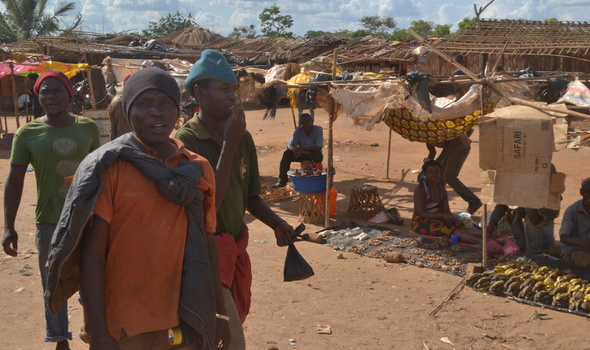
A worker called Issufo has been here for over three months. “But I don’t find enough to make some money,” he says. “I have five kids and nothing to take home to them.” He doesn’t want to go back to Nkoloto, where he comes from. “I was digging rubies inside a hole when the FIR (arrived. They told me to step out. When I got out of the hole, one of them shot me. In the leg.” The bullet wound has healed since July 2014 when this happened, but the hole is still visible in his right leg: both where the bullet came in and where it went out again. MRM has a similar incident in their records. “We understand FIR were dispersing a hostile group of illegal miners when one of the miners was shot in the leg by a member of FIR.”
The question remains how Issufo and the other locals of Montepuez ever going to make a living again. MRM has said that 800 jobs have been created in an area where formerly ‘there were none,’ but of all the villagers interviewed, none have told us that they were formally employed. There is also no record of any advertisement of jobs in any of the local media or administrative offices. There have, however, been complaints in Nseue village that local chief Horacio Terencio is making good money by selling cheap labour from locals to the company.
The local chief is a labour broker
At a recent community meeting in Nseue, Terencio was angrily confronted by villagers: how could he act as a cheap broker, pocketing a nice commission every time, rather than defend the interests of the community? That meeting ended with Terencio jumping on his motorbike and hurriedly leaving the area. But he returned the next day to continue his enterprise.
The law and the general
Formally, there is law and order in Mozambique. Since 2014, a new mining law (no. 20/2014) seeks to safeguard national interests through tax provisions and prescribes that benefits of mining should be extended to communities. It also prescribes fair compensation in cases where citizens have to be resettled, and allows for mining rights for individuals. But so far, the law is toothless: the phrasing of the part about mining rights is still aimed at those who are already wealthy and have the capital to begin a massive mining operation. It doesn’t stipulate which percentage of profits should be destined for community development and it doesn’t address the rights of citizens to livelihood and land.
An even more fundamental question is how this law is going to be implemented when former legal frameworks and agreements are already being broken in Montepuez? Murder, beatings and arson have always been illegal; yet the provincial administrator, the local administrator and the district head attorney – to name but a few- seem powerless to stop these. Likewise, reports abound of policemen and other officials colluding with illegal buying networks and facilitating theft and smuggling (9). Searching for justice, law and order in Montepuez for the past year and a half, these seem largely non-existent.
The General
In a bar in Pemba, a while after he has left Montepuez, a man suddenly sits down next to Estacio Valoi as he nurses his whisky. Estacio knows him vaguely as a lawyer from the area. The man has a message for him, he says. “The people in the mining area have been asking about you.” One of these people appears to be MRM board member, General Raimundo Pachinuapa himself. “The General,” the lawyer calls him. He tells Estacio about people who work for ‘the General.’ “They make a lot of money. The General likes to spread his wealth around. He doesn’t even care if the company is performing well or not. There is a lot of money for those who are friends of the General.” Estacio decides not to tell him that he is not a friend of the General at all.
Questions put to Mozambique’s Minister Pedro Couto (Environment) and Minister Celso Correia (Mining) have remained unanswered to date.
UPDATE: This story has been updated from the original version based on a number of factual inaccuracies which were raised with us by Gemfields, MRM's majority shareholder. These are:
The phrase in the original first paragraph 'near the village where his family had lived for generations' was changed to read 'in the region where his family had lived for generations.' (This is significant because Gemfields would be directly responsible if the murder had occurred within its concession area. Though the parents of both Antoninho and Artur claim that their sons were killed inside the concession area, MRM and Gemfields dispute this.)
The quote by the father of murdered Antoninho, Geronimo Potia, in the original story 'the company did not help. The police did not help. Only the foreigners helped' has been removed because the family did not report the murder to the company. Gemfields has pointed out that the company could not help if help was not asked. This is technically correct. (However, ZAM has put to the company that locals report being too scared of the company to approach it for any reason at all.)
The new altered version of the story also does not carry the original assertion that locals were murdered for refusing to vacate their lands. Though there are numerous reports of beatings and burning of houses as a consequence of such refusal, reports of killings are only connected to illegal mining.
The year that MRM acquired its ruby mining license was erroneously reported as 2011 in the earlier version. This must be, as it reads now, February 2012.
The previous version of the story omitted a denial by Gemfields that it has a connection with private security men called 'Nakatanas.' The denial has been included.
The number of private security guards that are formally contracted to MRM was erroneously reported as 4750. This has been corrected to 470.
The previous version mistakenly asserted that Gemfields 'holds the monopoly' on the famous Faberge eggs. This has been corrected to read that it 'holds the commercial brand' of the eggs.
THIS JUST IN: We have been made aware by Gemfields that the ARKHE security guard who was taken to court for 'homicide with intent to kill' was acquitted because evidence linking the guard to the murder weapon was found inconclusive. A previous version of the story erroneously included this case in four cases of convictions for killings. We apologise to Gemfields for the error. Also: of the eighteen criminal cases that have been processed, or are being processed, by courts in the region, nine and not all are for homicide. The rest are for assault and injury by shooting. Again, our apologies.
Cover photo: Picture was taken inside the MRM-Gemfields' area of their main camp of Maningue Nice.
Notes
(1) MRM came into being in 2011 and assumed responsibility over its mining concession area in 2012
(2) From AMA research report (in Portuguese): https://www.documentcloud.org/documents/2748165-AMA-Research-Report-on-the-Namanhumbir-Area.html
(3) See MRM response here: https://www.documentcloud.org/documents/2748159-MRM-Gemfields-Response-to-Questions.html
(4) Remarkably, MRM expresses interest in a ‘dialogue’ with government on the issue of a permission to buy rubies from artisanal miners, saying that “the ability of MRM to engage in such trading activities could offer considerable national value.” It also informs us in its reply to questions that the Mozambican government has set aside two areas for artisanal mining, “which are reported to have produced considerable volumes of rubies.” Our team has however not come across such areas, and neither did any of the locals we interviewed over a period of more than a year. Who are mining these ‘considerable volumes’ and where? We intend to follow up on this matter.
(5) Idem https://www.documentcloud.org/documents/2748159-MRM-Gemfields-Response-to-Questions.html
(6) See SRK Report here https://www.documentcloud.org/documents/2752153-SRK-Report-on-Montepuez-Ruby-Mining.html
(7) AMA research report https://www.documentcloud.org/documents/2748165-AMA-Research-Report-on-the-Namanhumbir-Area.html
(8) MRM response https://www.documentcloud.org/documents/2748159-MRM-Gemfields-Response-to-Questions.html
(9) See for example this study on state officials and ruling party involvement in illegal trading and smuggling http://cic.nyu.edu/sites/default/files/kavanagh_crime_developing_countries_mozambique_study.pdf

